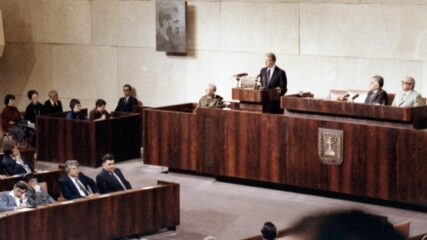October 6, 1973
Egyptian troops cross the Suez Canal to push the Israelis out of the Sinai at the same time that Syria attacks in the Golan Heights, starting the Yom Kippur War. Egypt and Syria had been massing armies along the 1967 cease-fire lines, and Israeli officials noted indisputable signs of a forthcoming attack on Oct. 5, the eve of Yom Kippur. When the attack comes, more than 70,000 Egyptians in 13 infantry divisions and 1,000 tanks cross the canal on bridges erected overnight, while artillery and warplanes bombard Israeli military positions in the desert. Egyptian troops breach Israel’s Bar-Lev Line and secure a bridgehead in the eastern Sinai.
Syria, meanwhile, follows an artillery bombardment by sending 40,000 men and two armored divisions into the Golan with air support. The Syrian forces defeat the Israelis on Mount Hermon, and the situation in the southern Golan is critical for Israel. At 2 p.m., air raid sirens sound throughout Israel, and radio broadcasts, suspended for Yom Kippur, resume.
Defense Minister Moshe Dayan begins the total mobilization of reserves, and men rush from synagogues to their bases. By the following morning, most of the reserves and their equipment reach the front lines. The Soviet Union, which encourages other Arab states to assist Egypt and Syria, begins a gigantic airlift of heavy weapons to the Arabs. The United States waits until Oct. 14 to launch its own airlift to replace Israel’s munitions, armored vehicles and airplanes. Although Israel recaptures the lost territory within weeks and threatens a counteroffensive deep into Egypt, the surprise attack is regarded as a golden moment for Egypt and is celebrated annually there.









